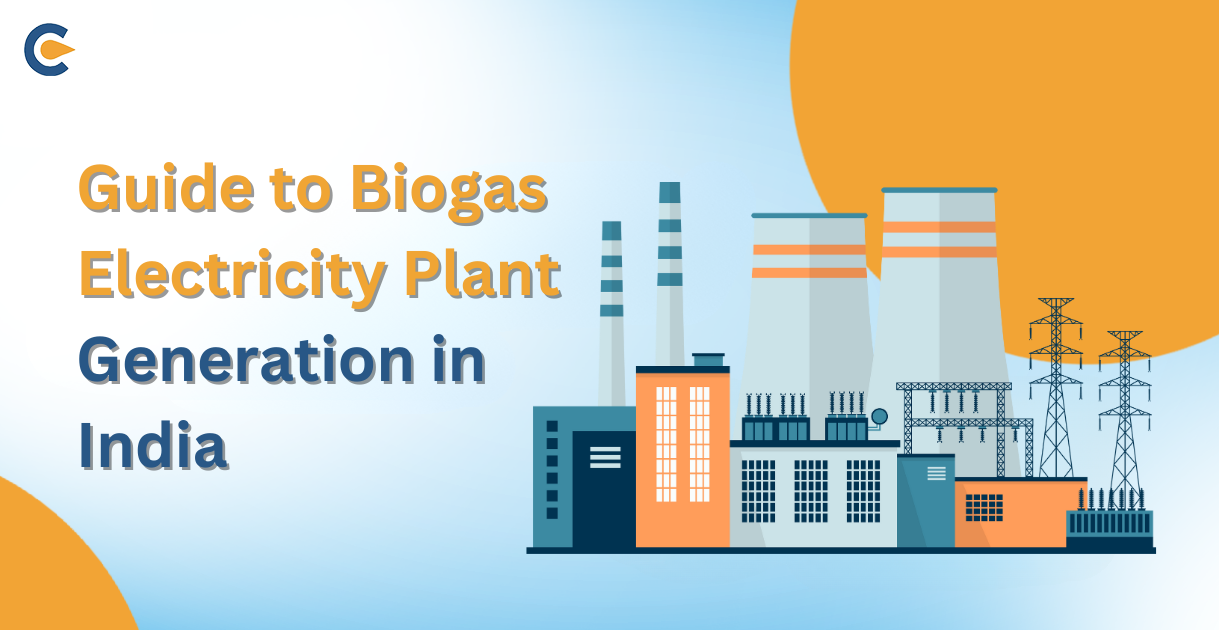As of 2022, the average global energy consumption per person is 0.7 tons, which is half that of Asia. In 2022, the amount of electricity consumed per person in Asia was 930 kWh, roughly one-third of the average. There are 46 compressed biogas plants in India, with a combined daily capacity of 272 tonnes. The production of biogas reduces dependency on fossil fuels like coal and oil. Another benefit of biogas is that, in contrast to other renewable energy sources, it is produced naturally and doesn’t require energy throughout the generating process.
With advantages including energy security, affordability, entrepreneurial encouragement, rural job prospects, and local economy stimulation, biogas presents excellent potential for India’s energy transformation. The development of a circular economy depends on biogas electricity plants because they transform organic waste into a valuable energy source, promote environmental sustainability, and hasten the transition to a more resilient and environmentally friendly energy infrastructure.
In this blog, we will talk about the meaning and the advantages of biogas electricity plant generation and the process of producing biogas electricity plants in India.
What is Biogas?
Biogas is an environmentally friendly energy source created when specific bacteria break down organic materials in an anaerobic environment. It is a blend of carbon dioxide, hydrogen, and methane. Animal waste, manure, sewage, agricultural waste, and food waste can all produce it. Another name for the process of producing biogas is anaerobic digestion. Waste materials are naturally recycled by biogas and transformed into usable energy. Hence, India has seen considerable growth in biogas electricity plants in the last few years.
Since the biological material used to make biogas will naturally decompose, it is less harmful to capture the gases produced during this process and use them as a source of energy rather than letting them escape into the atmosphere. Additionally mostly cyclical, the biogas production process is a part of a larger, sustainable cycle of agricultural waste management.
What is a Biogas Electricity Generation Plant?
An establishment that uses biogas produced by the anaerobic digestion of organic materials to produce energy is known as a biogas electricity plant. The main elements of biogas are methane and carbon dioxide, which are then captured and used as fuel to run generators and other machinery that produces electricity.
Biogas electricity plants are a very commendable solution that offers many advantages, asserting its claim to be a major player in the transition to a more sustainable and ecologically friendly energy landscape. They also address the pressing issues related to waste management; this innovative strategy makes a significant contribution to economic expansion, environmental protection, and energy resilience.
Biogas electricity plants are a very appealing and flexible solution that not only addresses the pressing environmental problems but also aligns with the sustainable development goals of the country. The use of biogas electricity plants is growing in significance as global initiatives to combat climate change and transition to cleaner energy sources gain traction. Biogas plants offer a scalable and adaptable answer for a more environmentally friendly and sustainable future.
Electricity Powerhouse generation from Biogas: Key Advantages
Some of the critical advantages of biogas electricity plant are:
- Biogas electricity plants are a sustainable and renewable power source for the country.
- With the biogas electricity plant, greenhouse gases can be reduced to great heights, which would benefit the country.
- With generating biogas electricity plants waste management can be reduced and used for a more compelling purpose. The organic waste can be converted into electricity at a significantly cheaper amount.
- With biogas electricity plant digestate, a nutrient-rich result of the process that can be utilized as a potent organic fertilizer to support agricultural and soil health is generated.
- Within the realm of sustainable development and economic growth, the biogas electricity plant creates employment opportunities.
Procedure of Electricity Powerhouse generation from Biogas
There are various essential steps that must be fulfilled to establish a biogas electricity plant in India. The process of biogas electricity plant is:
Collection of the Feedstock
The first step in the process of biogas plant is the collection of the feedstock. The feedstock consists of the animal excretion, leftovers from the agricultural, and other organic waste material which can be used to produce the biogas. All these feedstock is sent where the biogas electricity plant is situated.
Anaerobic Digestion Procedure
The next step in the procedure of biogas electricity plant is to start with the anaerobic digestion process. In this stage large digesters are used where the complex material that are organic in nature are broken. Here there is absence of the oxygen in the whole process. The components found in the majority of the biogas are carbon dioxide and methane.
Capturing and Storing of Biogas
The third stage in the process of biogas electricity plant is the storage and capture of the biogas that is produced. All the biogas which is made in the previous stage that with the anaerobic digestion process, is not captured and stored, which will be used in the next steps. This stage helps in minimizing the greenhouse gas emissions.
Generation of Power
The stored biogas is utilized as fuel in petrol or turbine engines to generate electricity. This process is very efficient in converting the chemical energy in biogas into electrical power.
Integration of Electricity
The generated electricity can be connected to the adjacent power grid or used locally to power the farm, town, or establishment
Electricity Powerhouse generation from Biogas: Environmental Merits
The critical environmental benefits of biogas electricity plants are as follows:
- The conservation of the natural resources can be done on a greater level
- The biogas plants help in minimizing greenhouse gases.
- When these biogas plants utilize the waste materials it also leads to improvement of air quality.
- The economy can also be circulated within the country, and as a result the country will enjoy a significant increase in the economy.
- Biogas plants also help with waste management.
Potential Challenges in Biogas Electricity Generation Plant
There can be various challenges that are faced by the biogas electricity generation plant.
- There can be challenges related maintenance of the plant as well as issues related operation of the plant. These challenges can be overcome with professional assistance from experts.
- Challenges related to technical aspects can also be faced by the biogas plants. It is vital to overcome these technical challenges in the initial stages.
- There can be various challenges if the biogas plants are not in compliance with all the regulatory and licensing requirements.
Conclusion
In conclusion, with this blog we have seen the key benefits of the biogas plant in India, and how starting a biogas plant can be a profitable option for the entrepreneurs. There are various merits of biogas plants like generation of employments in various rural parts. With Corpbiz’s expert assistance and guidance you can enjoy a seamless and hassle free establishment of a biogas plant.
Frequently Asked Questions
What is the use of biogas in electricity?
The biogas helps in the generation of the electricity with the use of various processes that are much less harmful for the environment.
Is biogas able to generate current electricity?
With the use of various prime movers and technology, biogas can be transformed into renewable fuels and energy. Diesel engines, Otto cycle engines, Stirling engines, gas and steam turbines, and direct conversion in fuel cells are among the prime movers that can be utilized to generate biogas power.
Which biogas plant in India is the biggest?
The construction of the biggest Compressed Biogas (CBG) plant in Asia at Sangrur, Punjab, is noteworthy for a number of reasons. At Sangrur, the CBG Plant occupies an approximate 20-acre area.
What is India's biogas energy potential?
According to the Global Methane Initiative, India's methane plants have the potential to reduce CO2 emissions by 43 million tons per year. The Ministry of New and Renewable Energy (MNRE) estimates India has about 17,000 MW of potential biogas from several sources.
What is the biogas electricity efficiency?
The reason for this is that co-generation can offer a better degree of energy efficiency, using an additional 40-50% of waste heat for productive purposes and about 35 percent of biogas energy utilized to create power.
How can biogas be used in India to generate electricity?
The gas can be used in generator sets as operating fuel. Biogas must go through a gas scrubber to eliminate undesirable particles, gasses, moisture, etc., before being fed into gensets for fuel. Utilizing biogas, two different kinds of generators are employed to produce energy.
Which Indian state has the most potential for producing biogas?
Maharashtra has the largest installed achievement at 671.40 million m³/year, but Uttar Pradesh has the highest potential at 14.73 billion m³/year.
How can biogas be used to generate electricity?
An internal combustion engine uses biogas to produce mechanical energy. Mechanical energy rotates an electric generator,
1. producing electricity.
2. Can a biogas plant produce electricity?
Biogas can be converted into heat and energy for use in fuel cells, microturbines, and engines after it has been caught. Biogas can also be converted into biomethane, also known as renewable natural gas, or RNG, which can then be fed into pipelines for natural gas or utilized as fuel for automobiles.What is a biogas power plant?
In our nation, biogas plants are a dependable source of decentralized renewable energy for cooking, heating, and electricity/power generation, as well as an option for thermal energy applications.











